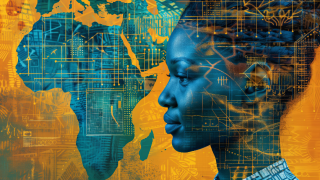Breaking down these four areas, simply put Baguley says that speed of course relates to “how fast we can get data where it is needed at a particular time and reactions need to be made within a particular time”.
Security looks at edge from the perspective of the “new and unique security boundaries and segmentation of data that they didn't have before when everything was centralised in one big cloud or one data centre”.
The data element examines the fact that “data has now been created and consumed in multiple different places and we don't necessarily need to move all the data around” this is achieved through things like distributed analytics and distributed AI modelling.
IT/OT, which is Information Technology and Operational Technology, or to quote Baguley’s metaphor “IT is the laptop in the hospital and OT is the cat scanner”.
Back to the first driver speed and using smart speakers like Alexa or Google Home examples, Baguley says “When you say ‘Hey Google, turn on the bathroom lights.’ for example, it takes a few seconds for that to happen.
“That's because essentially I'm saying something, Google has to work out what I've said, it then has to talk to the relative API's, then to the provider of my lighting system, they then have to send a message back down to my edge device, sending it to turn it off, this all talks to the cloud talks and back again”
And while this is liveable for the home, autonomous vehicles are a different thing exactly “If a car suddenly pulls out in front of me. I don't want to have to wait six seconds for my car to talk to the cloud to decide whether to break of not. Those decisions have to be made locally.”
But that’s where AI and ML and the data segment come into play, though it is important to recognise the differences between the two. The best way to explain it is “Tesla is not sending live video feedback from all its cars to make decisions; those decisions are made in car by a very advanced highly powerful Ai focus chipset”.
It is however “doing machine learning to educate that AI and that machine learning is done at the centre”.
He also mentioned secure access services edge (SASE) in the data conversation which of course applies to the security too, saying:
“it's really going to change how people access data and more importantly it's driven by people having a need for speed… we're doing is we're taking technology that traditionally was kept in someone's data centre, essentially authentication.”
Using Office 365 as example, he explains that traditionally if you wanted to access this from home you’d have to VPN into your office to get a single sign-on authentication to then route, out of my office wherever that office data centre is – but why can’t we access this directly and locally?
“That's the architecture change that's happening,” says Baguley. “We're taking those functions that currently run in those DMZs and we're pushing them out to these SASE points of presence.”
Overall, he says security needs to be viewed holistically “it’s not just about spinning things up, it's about how do I integrate security into what I'm doing”.
SD-WAN also got an expected mentioned, with Baguley crediting it as enabling the ability to “provide a reliable optimized connection, as opposed to an expensive dedicated WAN connection with always-on connectivity and end to end security”.
Baguley’s parting message, “don't just think about the hardware, don't just think about where the data flows. Think about how people are going to deploy to and manage and operate applications in this environment and how you're going to make it as easy as possible for them to take advantage of that”.
During Edge Global Week we also heard about the role of local fibre and 5G and how open source can support telcos.






